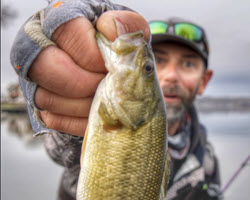
By popular demand, I’m going to tell you about a tackle box that never leaves my boat. Twelve months out of the year, from New York to Texas to California, it’s always with me – it’s my panic box.
It has saved my butt over the years and that’s why I always want to have it accessible, in the compartment behind the driver’s seat of my boat. It’s kind of like a bright red or bright white fire extinguisher. When I’m in situations where I’m struggling, it’s obvious and ready to help me salvage the day.
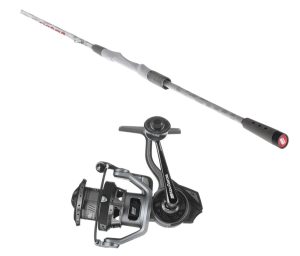
Why do you need a panic box? There are several reasons. Generally, they have to do with the fishing being brutally tough. Maybe there’s a cold front. We have more and more fishing pressure every year, and that can put the fish in a funk. Or perhaps you’re fishing extremely clear water where conventional lures are too bulky or too obvious.
That’s not the only set of scenarios, though. I also bring it out when the forage the bass are feeding on is small. In some places that’s all year long, but just about everywhere it can occur post-spawn and through the summer. The bass are feeding on the young of the year and you need to match the hatch.
This is a system that is based on finesse fishing. You’re not going to use heavy baitcasting gear and heavy braid. Instead, I want a 7’ to 7’6” spinning rod ideal for casting lighter baits. I pair it with a 20 or 30 size spinning reel spooled with a main line of 10-15 pound braid and a leader of 6-10 pound fluorocarbon.
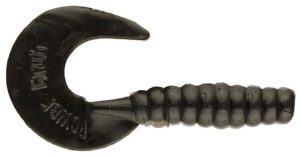
My system has a dozen or so different categories of lures, but there are really four or five key players. First is a small, 2-3” grub or swimbait. I like the 2” PowerBait Grub or any one of a number of small Berkley swimbaits like the Ripple Shad or the 2.8” Power Swimmer. This is a presentation that I’ll use when I’ve been catching fish on a larger swimbait like a hollow belly and the bite fizzles. I know the fish are still there and I don’t want to deviate from what I’m doing, so I just downsize. The weights are smaller, too. I might go from a 3/8 or 1/2 ounce head down to 1/16, 1/8 or 3/16. I rarely go over 1/4.

I almost don’t want to talk about this next category because they’ve been in my box for years, but if you’re not fishing inline spinners you’re making a mistake. I use three different kinds: willow leaf blades, Indiana blades and Colorado blades. I pick the blade style just like I would with a spinnerbait. When it’s clearer and I want flash, I go with the willow. I also use it around vegetation. When I want more vibration and the water is a little stained, I choose Indiana. Finally, if it’s stained to dirty then a Colorado gets the call. In other words, I pick the blade style just as I would with my spinnerbaits.
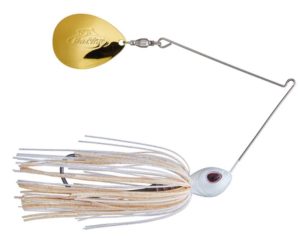
The next category is finesse jerkbaits, both suspending models and floating minnows, 3” or smaller. You guessed it – this is where I go when a big jerkbait or topwater bite dies, or if the forage is small. With that floating minnow, I make a long cast, let it sit, then hit it so it just barely pulls under the surface and floats back up. Then I do it again, until they bite.
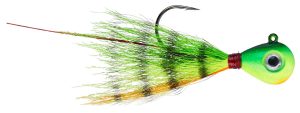
One sleeper in this box is the hair jig. That’s another category I’ve used forever. I carry three colors: black, brown and white. When fish are cruising and I can’t get them to bite anything, that’s typically when I use the black one. I just reel it slowly back to the boat. It barely does anything at all. It just slightly pulses and that’s what makes them bite. When the bass are schooling on small bait, that’s when I use the white one. I save the brown one for times when I’m using a full-sized jig and the bass stop eating it. I just drag it along on the bottom and you’ll be surprised at how many fish you’ll mop up.
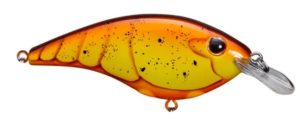
Last but not least, one category that saves the day perhaps more than any other is ultralight crankbaits, both with a lip and without. They used to call them “crappie crankbaits,” but now many companies make them especially for bass. I have several from Berkley and several from Japan that I really like. When the trap bite dies in the spring because 80 dudes are out there chucking one, or you’ve gone down your best cranking bank and can’t get the fish to bite, start slinging one of these and you’ll help yourself out big time.
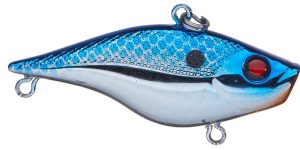
I’ve gotten so many questions about the panic box over the years. My best advice is to keep it visible so it’s always on your mind. It’s a great way to prevent zeroes and a great way to turn a poor or average day into a solid one.
_____________________________________
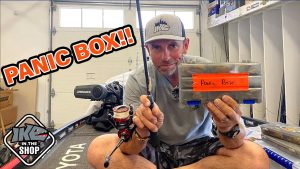
Like Ike on Facebook, and follow him on Instagram and TikTok for fishing and fun content.
Subscribe to Mike’s YouTube channel, to ensure you see every adventure video. (Download the YouTube app on your phone and the videos will come to you automatically.)
Return to Mike Iaconelli’s website
















